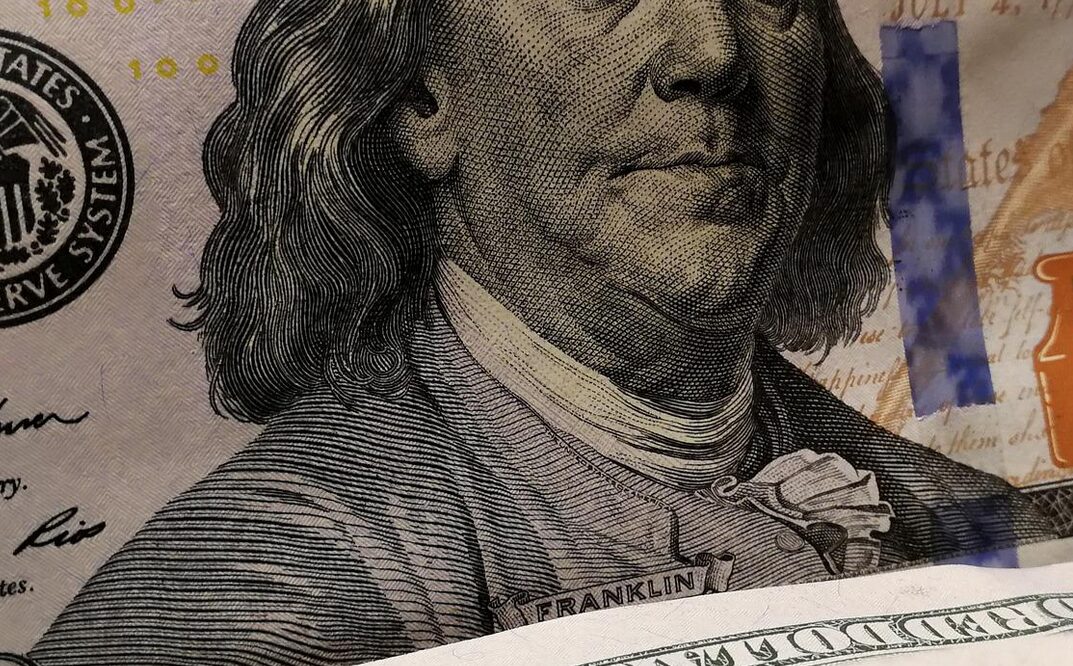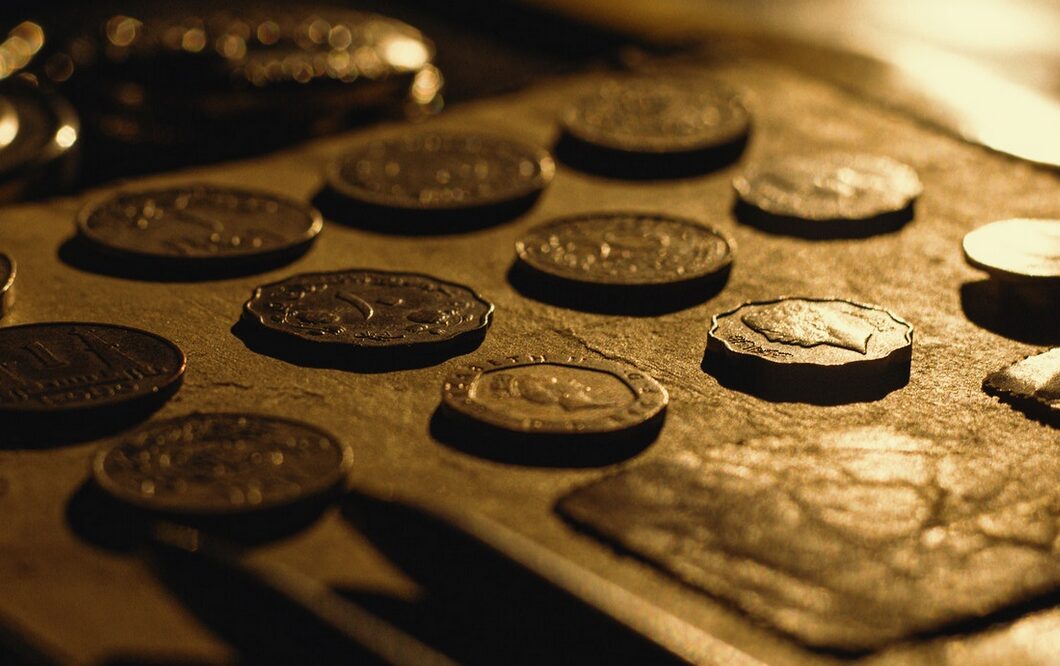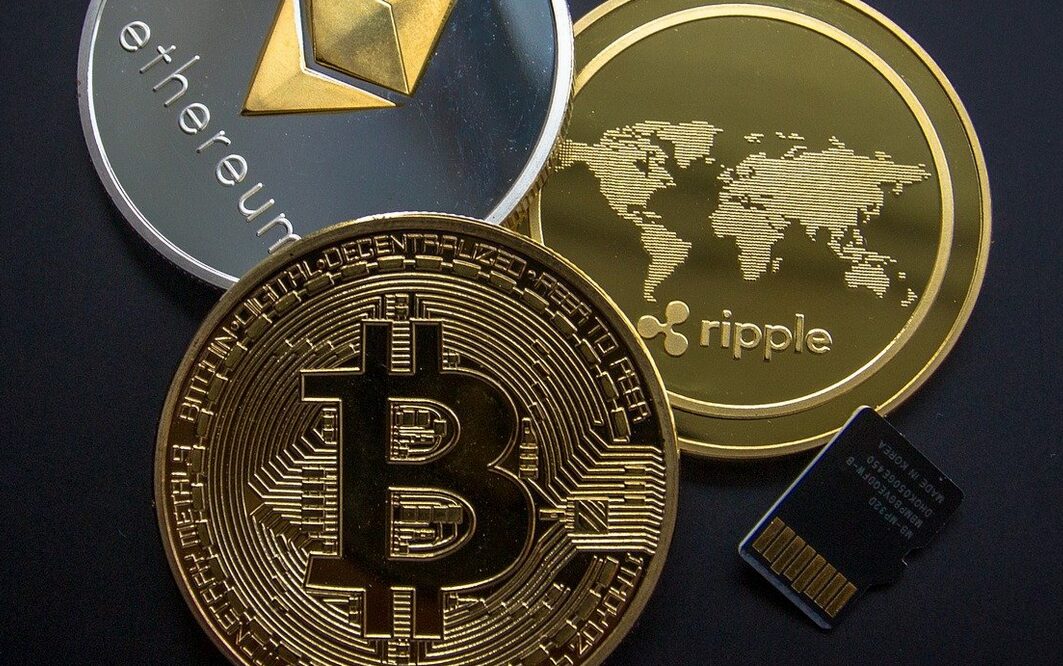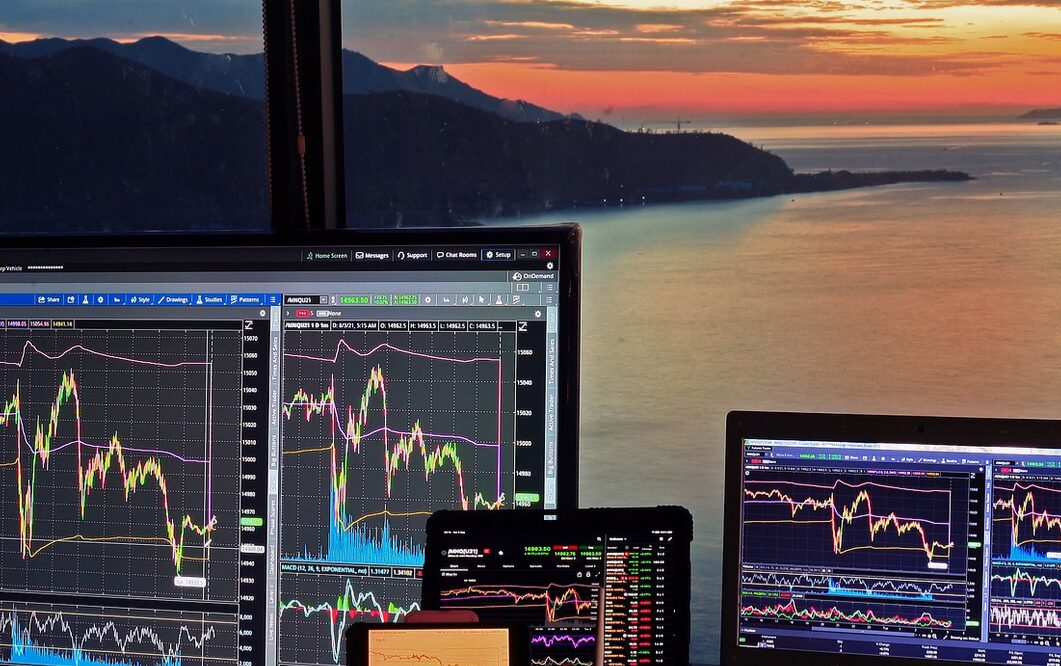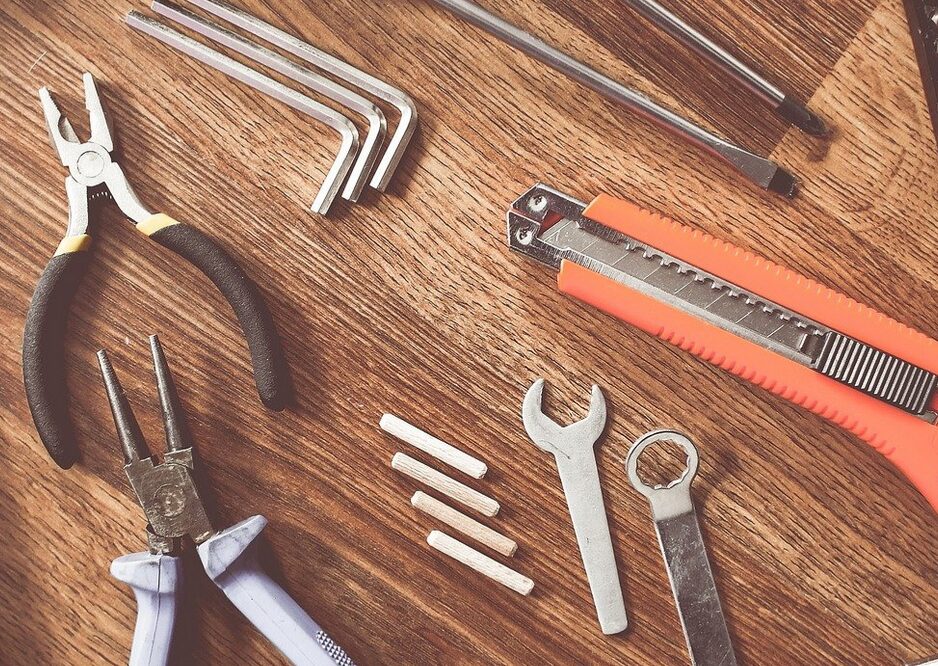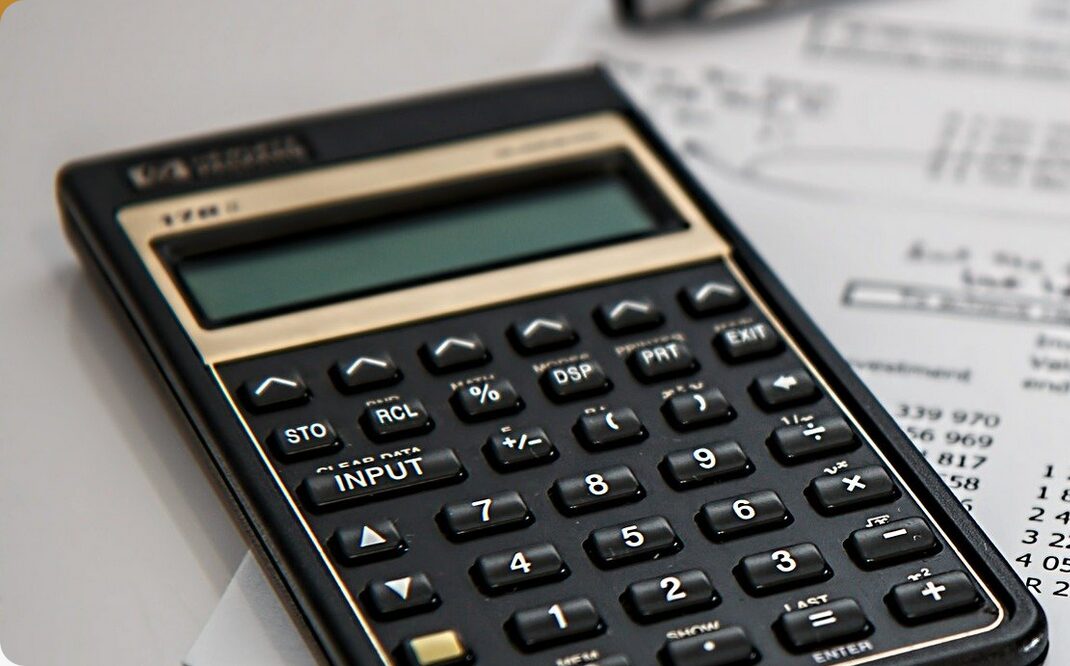Gold in times of inflation
As the global economy recovers from the pandemic, many investors are concerned about the relatively unfamiliar idea of rising inflation, especially in the US, where investors have been accustomed to low inflation levels for more than three decades. You often hear or read that gold provides a hedge against inflation. And this is one of the biggest concerns for investors right now as they flock to safe-haven assets. In this guide, we’ll talk about is gold really a hedge against inflation and should you be investing in it? What is inflation? Before we delve into details, let’s start with the basics of inflation. Inflation is defined as a long-term increase in the pricing of goods and services. It equates to a fall in the purchasing power of your money. As a result, it requires more currency units to buy the same product. Gold and inflation, a look back According to a World Gold Council analysis based on data dating back to 1971, gold has returned 15% per year on average when inflation has been greater than 3%, compared to just over 6% per year when inflation has been less than 3%. When we analyze the evidence more closely, we get a different scenario. For example, suppose we consider not only year-on-year changes but also movements in both directions. In that case, we can see that, while gold appears to be a decent hedge against inflation over the long term, its abilities in this regard are less conclusive over shorter periods. Is investing in gold the right option during inflation? As many investors seek haven in gold during inflation, history suggests otherwise. In principle, an investment that hedges against inflation would rise with the rapid rise in consumer prices. However, during some of the most recent periods of excessive inflation, gold provided a negative return to investors. For example, investors profited greatly from 1973 to 1979, when yearly inflation averaged 8.8 percent. As a result, gold returned an astounding 35%. On the other hand, investors lost 10% on average from 1980 to 1984, when annual inflation was 6.5 percent. So, why do we see an increase in prices? There are two factors for the rise in Gold price during inflation or uncertain times. Fear/opportunity is the one factor that drives the prices of gold. During economic downturns, investors rush to gold. Gold prices surged during the Great Recession, for example. However, gold had already increased until 2008, approaching $1,000 per ounce before dropping below $800 and then bouncing back and climbing when the stock market bottomed out. Nonetheless, gold prices climbed even as the economy improved. Due to many geopolitical issues, including Brexit, and the US-China trade war, the precious metal has been in surge mode since the end of 2018, a phase that remained until mid-2020 due to the COVID-19. In March 2022, gold hit an all-time high of $2074 because of the ongoing global inflation and the Russian-Ukrainian war. Another element driving the price increase is gold’s positive price elasticity. This effectively implies that when more individuals purchase gold, the price rises with demand. It also implies that there are no underlying inflationary factors influencing the price of gold. If investors begin to flock to gold, the prices go up regardless of the economic situation or monetary policy. What factors do you need to consider other than inflation? The rise and fall of gold prices depend on various factors. While gold provides a good hedge against inflation, there are several factors you need to consider before investing. Supply and demand Because global demand for gold remains high, especially in the jewelry and industrial sectors, its price is influenced by the fundamental supply and demand principle, which states that when demand is high, prices rise. Value of USD Because gold is a dollar-denominated precious metal, the value of the US dollar has a direct impact on its per-ounce price. As a result, gold prices tend to fall when the dollar appreciates, and vice versa. Geopolitics Because gold is regarded as a safer investment by investors, its demand can skyrocket during times of global crises or geopolitical upheaval. In terms of economic viability and stability, metal outperforms all other assets. Because gold’s acquisition and output costs are rarely affected by significant fluctuations, the element is extremely durable, and supply is sufficient to comfortably fulfill demand. When to start investing in gold? As dependable as gold is as a long-term store of value, the gold price is sometimes volatile in the short term. Moreover, because of its dual purpose as a rare commodity and a store of wealth, the evolution of the gold price is influenced by a far greater number of factors. As an investment safeguard, gold may so disappoint in the near run. A rising inflation rate certainly increases demand for gold, but other factors might negatively influence the gold price. So, when is the best time to buy gold? The answer is always – as long as you’re in it for the long run. Gold’s strongest asset is its impact on a portfolio, even though it looks not a perfect hedge in terms of inflation. However, when coupled with a range of assets, gold’s performance begins to shine. Historical pricing data may also assist investors in determining the best time to buy gold based on demand. For example, when a weakening US dollar caused the gold price to fall in the past, when did it begin to climb again when demand increased? Such analysis can help show the optimal moment to buy to get the most value from your gold. Understanding past gold prices allow you to develop predictions about the metal’s future path and make more educated decisions about whether to buy and sell. Final thoughts In the long run, gold should retain its value in the face of inflation. However, it may or may not be an effective hedge in a shorter timeframe.
Continue ReadingWhat are Futures in Trading
There is a vast catalog of different types of trading, so when choosing one that fits your lifestyle, it’s important to know which type of trading will grant you greater rewards over time. One of these types of trading is Futures Trading. It’s widely known in the financial world, but there are many traders that don’t understand the basic properties and the main concepts to trade with futures. What is futures trading? “Futures” are what we call a financial contract or agreement to buy or sell a specific asset, option, security or crypto at a future date at a set price. You can trade in the futures exchanges or any broker’s account that offers you this trading service. Once you start trading futures, you’ll soon notice that you can take profits from buying or selling contract assets in a short, medium or long term. This happens when a future contract is finished, so the buyer has the obligation to buy or receive the underlying asset, and the seller has the obligation to provide or give the asset or underlying asset. Why trade futures? Future Trading has become widely known among the trading community because they can speculate the price movement of a specific asset -and buy or sell the asset afterwards-. When trading futures, there are many features, advantages and benefits traders can have the opportunity to receive such as leverage, diversification and flexible policy taxes that, apart from other stock markets, the possibility to have these benefits are highly low or almost non-existent. 3 advantages by trading futures 1. It’s an efficient and fair trading system For instance, it becomes unpredictable to know for sure the Federal Reserve’s next financial move unless you have an insider that leaks essential information that can sway a trader’s contract. This way, it becomes an unfair system to all traders. So, when investing money on futures contracts, the market has a tendency to trade market aggregates, for it is difficult to actually know the outcome of the trade. 2. Speculation can make you earn money fast When an investor starts to acknowledge good judgments towards its trades, this means the trader can make money unbelievably fast. Trading futures is similar to a betting system where you have to assess every possible outcome in every possible situation to earn or even double your investment. This is where it gets tricky. Having only knowledge and experience towards the future contracts doesn’t necessarily mean you will win every single time since futures are high-risk investments of money. If you apply stop-loss orders you can minimize the chance of losing money, but the opportunity to lose all your investment is likely proven. 3. Be a trader with a Low Capital This is another reason why trading futures is greatly admired. Traders who don’t have a maximized high capital to their owning can still have an opportunity to win contracts safely. By trading mini future contracts -such as the mini-Sp500 or mini-Dax-, traders can increase their chance to make the market work in their favor even with a low capital. If you compare Future Contracts to the Stock Market, trading futures is cheaper. Its low-fee cost is a good choice to start into the Future Contracts business. Are you up for it? There is a vast catalog of different types of trading, so when choosing one that fits your lifestyle, it’s important to know which type of trading will grant you greater rewards over time. One of these types of trading is Futures Trading. It’s widely known in the financial world, but there are many traders that don’t understand the basic properties and the main concepts to trade with futures.
Continue ReadingWhy trade and invest in gold?
Days go by unbelievably fast, and so does the gold trading and investing community around the world. Gold is a rare and unique asset in finance due to its highly liquid profile. Many traders trust in gold investments, for it’s trustworthy as much as it’s a future-holding investment. Indeed, gold investment or trading is great, when the world has political or economic times of uncertainty like this. The high inflation levels in the past forty years, the crisis on the supply chain, and the bad decisions inside the federal reserve, all made the perfect weather to start an economic storm, and the haven gold or trading with this asset is a solution to this pandemic. Here are 3 reasons why investing in gold should be a good decision for your financial future: 1. Gold’s value is still intact. Even though many years have passed, gold managed to hold tight its value through decades. This is why traders and investors trust in gold to preserve their wealth. Gold is an asset that has helped for so many years support the money value, with the recognized gold pattern. For the last three decades this pattern doesn’t exist, but the central banks from economic potential countries, still accumulate this precious metal, preparing for a potential crisis for the future. Also, there are stable coins in the crypto world, as USDT call Tether, that has gold reserve to support the native token’s value. 2. Gold value accommodates in times of geopolitical crisis. When governments power and decision-making status are low, gold prices are often rising. This is one of the reasons why people turn to gold investing to save their finances. If inflation rises, the gold increases its value, because so many investors buy it and hold it, for it doesn’t lose the economic capacity to their fiat money counterpart like the USD. But this kind of macroeconomic information, can be used to make a good trading decisions, such as buying gold. Also, it’s important to know that trading gold and investment are different, read below and know more about it. 3. Increased demand. In crisis periods like this, gold becomes a favorite investment for many traders. As much as there are emerging economies in the making, gold finds its way to hold on to the top of boosting demand economies. What do you prefer Trade or Invest in gold or both?
Continue Reading3 Advantages of being a forex trader
Forex market is the place where the most profitable traders inhabit, as also the greatest financial market in the world. If you are in it, you may know the story of Georges Soros, and how he earned billions of pounds sterling, by bankrupting the England’s Bank. Soros is an iconic forex trader and he knows the benefitsand advantages to being a forex trader. Forex is the most traded market in the world. That’s the main reason that you should consider to become in a professional trader. However, you have to understand how it works and how totake profit from it. Forex is the most volatile and more liquidmarket in the world, for it is the home to the Central Banks and the FederalReserve. Every decision, made by these institutions directly affects theforeign exchange market and the price action. In this post you’ll know the advantage ofbeing a forex trader, and how to take it. 1. Forex is a 24/5 open market Forex market has an essential advantagewhich is the possibility to trade 24 hours long. Forex market, hasn’t thestrict schedule as the New York Stock Exchange, it is a more accessible marketto all traders around the world. Trading hours start from Australia’smorning time and close in the US hours, so forex market never closes. This 24/5 markets open means flexibilityfor your trading plan. No matter, the part of the world from you does trading,you can adapt your system to your daily lifestyle. 2. The Spreads and Commissions are lower than other financial markets Forex market fees cost are cheaper thanother financial markets. Indeed, forex market is a low-cost place when comparedwith Stock market. This advantage is great primarily when you want to starttrading with a low capital. Low fees costs exist due to the mainreserves that are a spread within forex brokers themselves in order to managethe risks in every position. This means that the position has two prices, a bidand an ask price. The difference between them is the broker’s gain. 3. You can take huge leverage and increase your earnings Leverage is a trader’s secret tool to getinto the forex market when necessary. A Forex trader can take profit from smallvariations into currencies pair prices, and win or lose money by strategicallyusing the leverage. Leverage represents risks which means apotential loss of your money, therefore it’s necessary to understand how itworks. This is important when you have a negative performance and need tomanage the risk in a particular position. If you want to make profit from a tradingpath, you need the leverage, but don’t expose your account with a high leverageas 1:2000. This kind of risk will make the market to never pay you. This isparticularly true if you have low capital. So, we recommend a leverage up to 1:200,and if you are new into this profession, take the low leverage offer by yourbroker. Finally, these 3 advantages put the forextrading as a great market where you can begin trading and learning how thefinancial markets work. What other advantage do you know? Let me acomment below.
Continue ReadingGoldTip: Pros and Cons of Day Trading Crypto
Money doesn’t grow on trees, and cryptos are no exception. As we all know, any investment in Crypto ishigh risk, high reward. So, investors should be aware to consider the possibility of losing their investments in a short time. However, Day Trading is a trending topic in the investment scene where you don’t need much experience to put money on a bet and generate rewards faster than ever. If you’re thinking to Day Trade, you have to be careful not to take it lightly. Every wrong move can mean financial consequences turned into losses if you’re not fully aware of the risks involved. So that’s why we’re here to give you our Golden Tips of the Pros & Cons of Day Trading. Are you ready? Pros of Day Trading ● Anyone that owns a crypto exchange account can freely day trade. There are no barriers that preventyou from creating an account, verify your identity, fund your account, and then start trading. The opportunity to join the crypto market and interact with other investors or day traders is right there. ● If you do Day Trading, crypto transactions are very cheap. This happens due to the absence of government taxes and fees: a decentralized market. Cryptocurrencies and the blockchains are designed to keep users on a low profile (meaning anonymous in terms of security) which allows them to process payments without intermediaries. ● Apart from the Stock Exchange Markets, Crypto Markets are open 24/7 to buy and sell at anytime, any day, and anywhere. When you enter the Crypto Market, you have the luxury to trade when it best suits you rather than it suits the market. Cons of Day Trading ● Even thoughit’s really easy to start trading cryptos, the most inexperienced one cansimply incur catastrophic losses as they can gain profits. The more you learn, the better you’ll know how to manage your investments and decrease the probability to lose. ● Not only with Day Trading but other trading strategies, you could fall victim to a pump-and-dump scheme when trading cryptocurrencies. This might happen when a group of people coordinate to artificially pump up the price of acryptocurrency in order to attract inexperienced and unsuspecting traders. After the traders invest their money, the coordinated group of people take the price out and take all the profits. ● Sometimes,having a 24/7 open market can be a double-edged sword. The nature ofcryptocurrencies is to make predictable patterns to have profitable earning most of the time, but when the market continues to move non-stop, it becomes almost impossible to predict some successful patterns. Then, Day Traders may find themselves looking for the right time to execute a trade longer than they expect, and their day sessions might turn into night sessions. Nonetheless, when you make the decision to start trading no matter the strategy you choose, it means you’re taking your inances into a new investment level where great things can happen if you learn how to move with the trends.
Continue ReadingWhat makes a good forex broker?
A good broker will have a range of accounts to suit different trading styles and budgets. They will offer in-depth market analysis to give traders a feel for what’s going on, and the best ways to make money from it. They should also provide educational resources, including video tutorials and reading material, in order to help you master the basics before you start trading for real money. Here are our five pillars of what makes a good broker. 1. Low Spreads and Fees A good forex broker should offer competitive spreads that minimise the impact on your returns from price movements when buying or selling currency pairs. Spreads of between 0.5 and 2 pips are good, but spreads of below 1 pip are preferable. 2. Exceptional Customer Support A good forex broker should provide support that is both fast and exceptional. If you need to cancel your order or close a trading account, they should do so without delay or difficultly, or they should offer a decent cancellation fee. Support should also be available 24/7 if you have an emergency. A good broker will have a wide range of customer service options. All of them should be able to answer you when you call, with the option to wait in queue if necessary. They should also send email messages and provide live chat support, because most traders prefer to communicate with real people rather than automated services. 3. Fast Withdrawals A good forex broker should not hold your funds for more than 24 hours, because some traders do not want the risk of the exchange rate moving against them overnight. A good broker should also use a safe and secure platform, and not work with unlicensed, unregulated or rogue third-party providers. 4. Good Trading Environment A good forex broker will provide the tools you need to help you make money. In addition to price charts and real-time currency quotes, some of the best brokers will provide you with advanced options trading tools, such as graphical indicators and pattern recognition software. They may also provide stock charts for related markets such as commodities and bonds. A good forex broker will offer a simple and intuitive trading platform that provides a range of charting tools, such as candlestick charts and oscillators. Some brokers will also provide technical analysis tools, such as pattern recognition software and indicator systems. 5. Regulated A good forex broker should be regulated by a financial authority, such as the FCA in the United Kingdom, ASIC in Australia or CySec. This means that it will be subject to regular audits and checks, so that you can be confident that your money is safe. This also means that your broker will have to provide financial information to the public, making it easy for you to compare prices. Who ticks all the boxes ? Eightcap has been our primary broker for our trading accounts for over two years. As traders of XAUUSD primarily we find the spreads on all assets to be the most competitive and especially for XAUUSD (Gold) the trading conditions are unparalleled. We regularly see less than 1 pip on a standard account with 0 commissions. Which is rare to see, spreads this low usually come with hefty commissions. Customer support and withdrawals are quick efficient and timely. Most importantly helpful, this combined with the fact that they have an MT4 and MT5 platforms with crypto CFD’s on the latter make it a versatile broker. Innovation and standing out is important too, a broker that cares about their customers also tries to innovate and we have seen some interesting services come out of the works such as Capitilise.ai, a no coding necessary AI powered trade automator, yet another tool to add to your trading tool box.
Continue ReadingHeiken Ashi Candles and how to use them
Heikin-Ashi Charts are a type of candlestick chart They look at the high-low range over a certain period of time. The heiken ashi is Japanese for the “average price.” Change in close patterns can be used to spot possible trends. Heikin-Ashi charts have an increased sensitivity to changes in the market direction, and are less affected by volatility than other types of charts. It is one of the most popular patterns that traders trade because it is visually easy and easy to read. Heikin-Ashi Charts are widely used by those who trade based on trend in a market. In that case, a setup for an uptrend or downtrend set-up is required, where the price increases or decreases to create a gap in the Heikin-Ashi Pattern. A good example of a Heikin-Ashi Set-up is the number of candles that must occur before the price closes above or below a previously higher or lower closing price. Heikin Ashi Charts are also used to identify important support and resistance areas. You must always keep in mind that these patterns are only meant to give traders ideas on where possible support or resistance is forming. The trader must not fall into the trap of believing that these patterns form actual support/resistance. Trade your own ideas and keep with what you feel is right for you, not what an indicator is telling you. Looking for reversals with Heiken Ashi charts. Using the right timeframe identifying price direction changes become much easier. Below is an example of a 2HR chart of XAUUSD as you can see there is no clear indication of directional changes in price. Now look below at the same period and timeframe 2HR Heiken Ashi, the waves of prices action are much much more visible. With large wicks signifying a direction change. This works well on gold as price ranges and the range itself is quite large. Why doesn’t everyone use Heikin Ashi? Ther is a trade off, for a clearer indication of trend and momentum we lose the granular information about price, there is a trade off. The open and close of the Heiken Ashi is not the closing or opening price price of the period rather it is formulated to give us an average. Open = [(Open price of previous candle) + (Close price of previous candle)] / 2 Close = (Open + High + Low + Close) / 4 So while Heiken Ashi can tell us about trends, it is not suitable for precise entries. It should be used as a confluence to an already existing strategy and is one (but powerful) tool of many in a traders toolbox.
Continue ReadingWhat are pips and how to use them
What are Pips in Trading? Pips are the smallest unit of movement in a currency. They measure how much a currency has moved in one direction against another. For example, if USD is trading at 1.2000 against EUR, and then it moves to 1.1995, then the USD has gone down by 5 pips against EUR (1.2000-1.1995). A pip is also known as points or points of percentage change on investment returns for securities that trade in foreign currencies. The difference in the fourth decimal place. For JPY pairs we count it from the second decimal place. For example USDJPY 109.24 -> 109.29 is 5 pips difference. For Gold (XAUUSD) we count it from the first decimal place 1891.10 -> 1891.60 is 5 pips difference. How to use pips value to calculate $ ammount per trade (Quick calc) My personal rule of thumb for off the cuff quick calculations on the expected risk or profit of trade goes like this: Rember this base calculation and quickly be able to calculate $ amounts expected for a trade. Base: (Remember this)0.10 Lots = 1$ per 1 pip You can use this basic calculation to make rough calculations to know exactly what you’re expecting when going into a trade. Example 1: If for example, you have a 0.05 lot trade with 50pip stop loss you can multiply and divide accordingly. For example : 1$ x 0.5 (half of base lot size) x 50 (pips) ~= 25$ Example 2: If you have a 0.30 lot size trade with 70pip take profit: 1$ x 3 (three times base lot size) x 70pips ~= 270$ Precise web calculators Before entering any trade, you should always know exactly how much you are risking per trade. There are many calculators online. Personally I use a mobile app called “Stinu” it is by far the best lot size calculator there is but it is paid now I belive (worth it, will save you a lot of headache and losses in trading). Search for it on your mobile appstore. Myfxbook has also a good one. If using our signals for calculation use asset EURUSD instead of XAUUSD for correct lot sizes for given pips. Myfxbook forex calculator
Continue ReadingTop 5 Easy mistakes to avoid when starting out trading
When starting out trading, many people make a lot of mistakes that may cost them a lot of money. If you want to avoid some of these mistakes, this post can help you. 1. Don’t trade without a plan This is one of the biggest mistakes that traders make. They start out trading without having any idea about what they want to do or how they are going to do it. They have no plan whatsoever, so they never know if what they are doing is going to be successful or not. If you don’t have a plan and just start trading, you are asking for trouble. 2. Always have an exit strategy This is something that many traders overlook and then regret later on. They open a trade and when it moves in the direction they predicted (which happens quite often), instead of taking off some or all of their position, they just ride it to the end. And when the trade then moves against them, they get stopped out and lose even more money. If you don’t have an exit plan, you are just asking for trouble. 3. Never revenge trade The truth is that many traders have huge losses due to revenge trades. They become angry with the market and then decide to trade against it. They will then either lose big or end up making money because they are trading against the trend, but they will lose more than they would have if they just moved on and left it alone. If you want to avoid this mistake, just don’t trade when you are angry. If you want to get somewhere in the financial world, don’t anger the market. 4. Know your time frame When you are a beginner, it can be tempting to trade stocks with high time frames so that you can see a lot of big moves. But this is not the best strategy since you will also see a lot of fluctuations which means there are also many false signals. These can be quite confusing and could lead to mistakes being made. Instead, start out by trading with smaller time frames and only after you feel comfortable, move on to bigger time frames. It is much less likely to make mistakes that way. 5. Have a risk management plan When you are about to open a trade, you should always know how much capital you are going to risk. Many beginners don’t or won’t take any kind of risk management when the trade. They will put in all of their capital at once and then regret it when the trade moves against them badly. When you have a risk management plan, you stay in control of your capital. If you don’t have one, you are asking for trouble. You may come up with your own plan that works for you or maybe even change it as your starting point gets more secure and stable. The key thing here is to keep the process as clean and disciplined as possible! If you do this right from the first step, then there’s less room for mistakes. These are the top 5 most common mistakes that beginners make when they start trading and I hope this post has helped you in some way. If this post has helped you in any way, please do share it with friends!
Continue ReadingThe benefits of specialisation in trading
Your trading edge In trading, it is possible to have an edge with specific strategies that might not be profitable in other contexts. It is essential to work on your strengths and specialise in the areas where you have the most advantage instead of trying a wide variety of strategies. The key idea here is to do what you are doing well and avoid being average or worse at anything else. While it is essential to try out new strategies, it’s not a good idea to pivot into something you are not particularly good at. If you do have an edge and can perfect your strategy, you can exploit this in your trading in the long term. A trader with a trading edge can produce excess profits over the long run, which ultimately matters in trading. To achieve this, however, you first need to locate and exploit your particular trading edge. So think about your skillset and what set of strategies will suit you best. Focus on your strengths To choose your strategy, think about your knowledge or experience in trading, whether it be technical analysis, fundamental analysis, or general market knowledge. You could focus on one particular type of approach and become an expert at it. For example, if you have a background in economics, it might be helpful to apply the economic theory when making predictions for the price direction. We at GoldSignals specialise in XAUUSD (Gold) trading and a few major pairs. We only trade the XAUUSD (Gold) contract with a pre-defined set of convergence rules. We use these rules to ensure that we always open trades on the right side of the market and avoid any unnecessary trades and, therefore, risk. Instead of trading many instruments on the XAUUSD (Gold) contract, we believe that you can gain an edge by trading one single instrument for a more extended period of time. It is also essential to think about how much trade risk you are willing to take. If you have a strong understanding of the market, this will enable you to make fewer trades. If you are not too good at technical analysis, then an alternative approach might be to find some traders who can identify the main trend and trade only in this direction. Consistency is key With appropriate risk management, one does not need to trade many pairs or instruments. By trading fewer instruments, you can gain an edge and let your winners run and cut your losers short, resulting in a smaller loss for each trade. By identifying the trend direction, one can hold fewer positions, but instead of waiting for the trend to complete its move, one can take the position for a quick profit. Practice on the demo account with very small amounts of money before you start trading live with real money. By doing this, you can avoid losing your capital early in your trading career. Once you have a winning strategy focusing on one or a few instruments, you can be more in tune with the price action and markets movements and not miss any opportunities that may arise in your strategy.A strategy that requires ‘five minutes a day’ is not going to work out in the real world because you will often find yourself wanting to do more due to the excitement of trading. Therefore, you must have a strategy with which you can keep your trading time requirements minimal. When it comes to markets, momentum and trends are your best friends. Basing your trades on sound analysis of market conditions and identifying solid trends in the market is essential to commerce with confidence. Be a specialist. Hone your craft, and you will find yourself trading more successfully.
Continue Reading